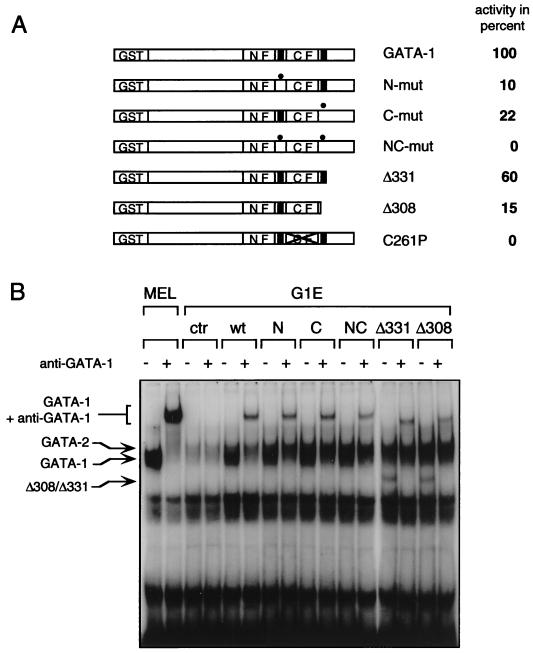FIG. 7.
Both N and C acetylation motifs are required for GATA-1-induced erythroid-cell differentiation. (A) G1E cells infected with a retrovirus carrying the indicated GATA-1 constructs were stained for hemoglobin with the dye benzidine. The number of hemoglobinized cells obtained with wild-type GATA-1 (∼7% of all cells in a representative field) was defined as 100%. N-mut and C-mut are as described in the legend to Fig. 2. C261P, GATA-1 mutant lacking DNA-binding activity; Δ308, GATA-1 mutant lacking the C terminus from aa 308 to 413; Δ331, GATA-1 mutant lacking the C terminus from aa 331 to 413. The critical difference between Δ331 and Δ308 is the presence or absence of the C-terminal acetylation motif. (B) Control gel shift from infected G1E cells demonstrating comparable expression and DNA binding of GATA-1 constructs. MEL cells which express high levels of GATA-1 but no GATA-2 served as controls. GATA-2 levels are high in G1E cells. To distinguish between GATA-1 and GATA-2, anti-GATA-1 antibodies were used where indicated to generate a supershift. wt, wild type.

